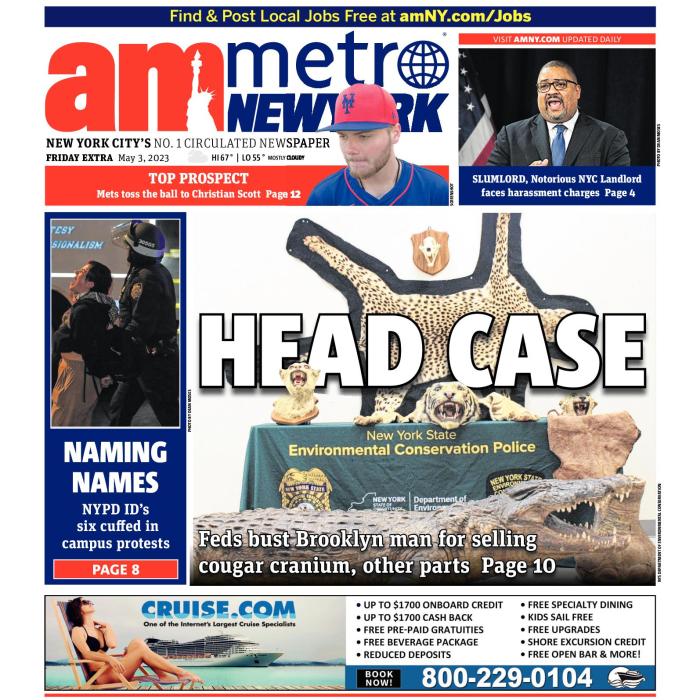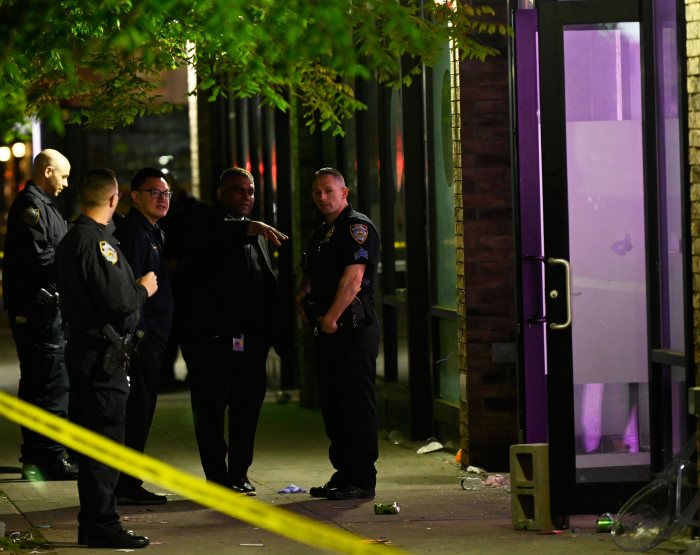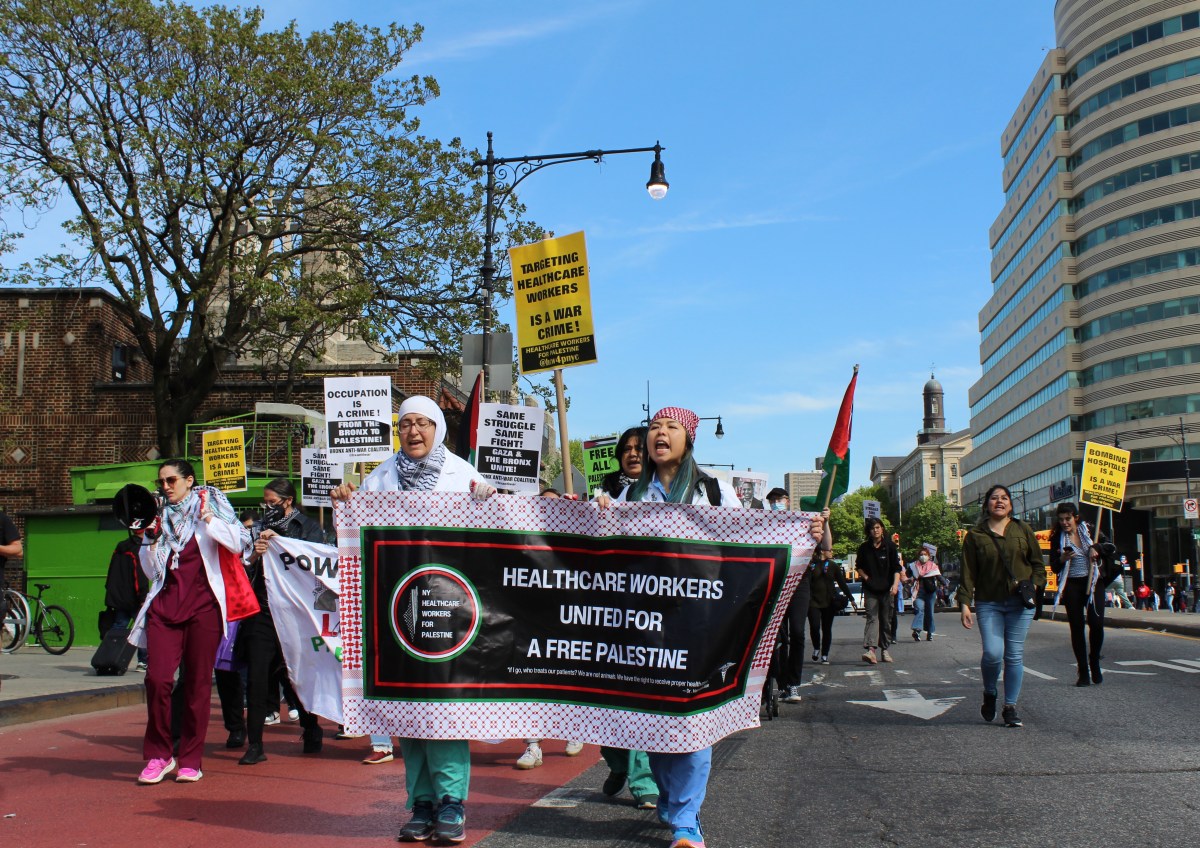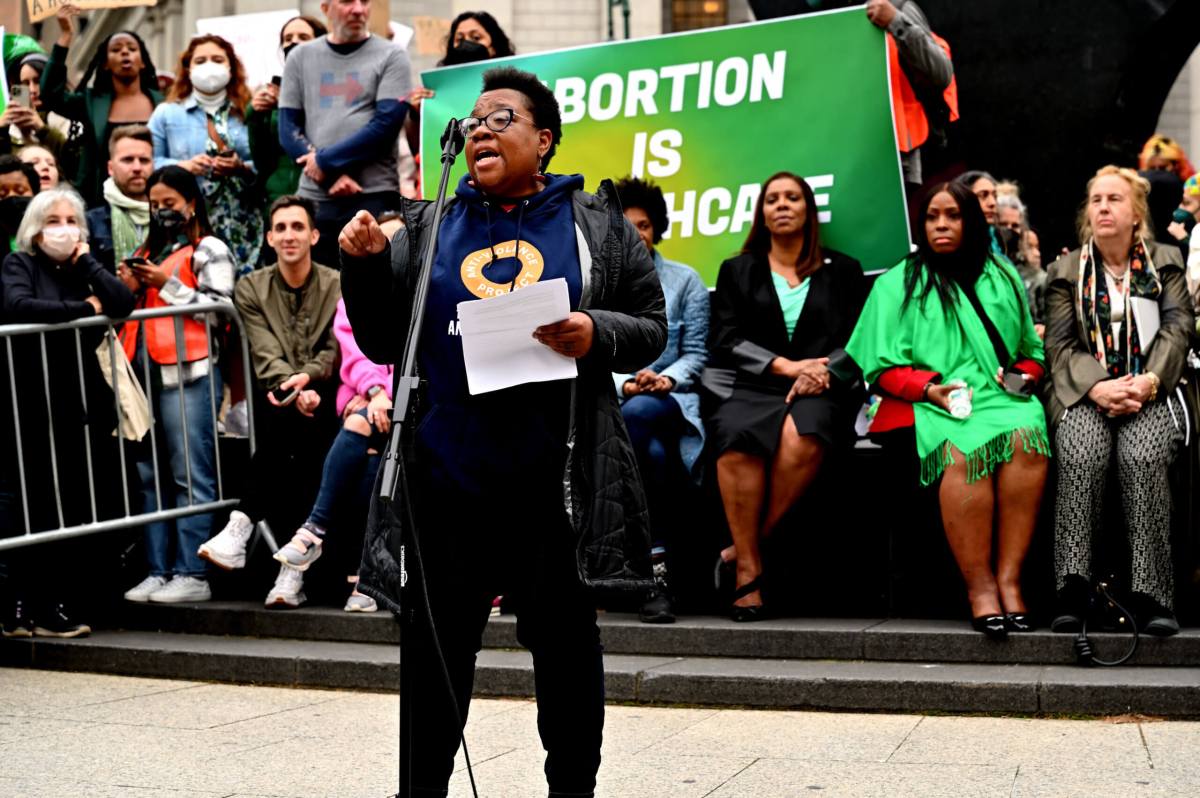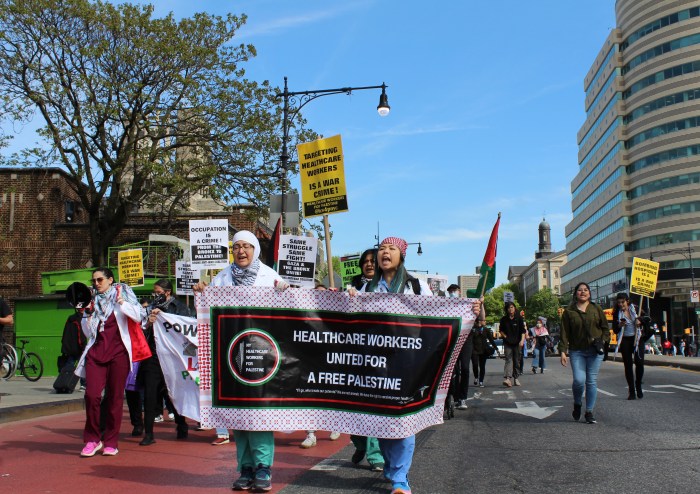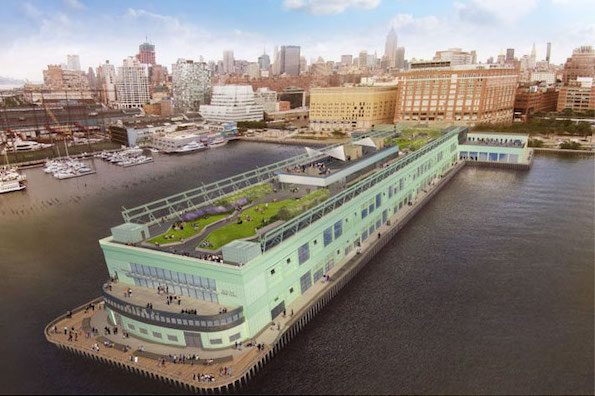
BY LUCAS ROPEK | Passions, like the tide, can run high — especially when waterfront property is involved. And although the reception from local residents was decidedly choppy during a Feb. 3 presentation to Community Board 4, it seems as if there will be smooth sailing ahead for plans to revitalize Pier 57.
Development firm Youngwoo & Associates and RXR Realty are poised to transform the historic semi-abandoned structure — at W. 15th St., in Hudson River Park — into a multifaceted complex with a public park, retail shops and a foodie-focused “hawkers’ market,” curated by peripatetic celebrity chef Anthony Bourdain (host of the CNN travel and food show “Parts Unknown”).
Despite Bourdain’s star power — and the promise of economic benefit — Chelsea residents have viewed the plans with concern since Youngwoo approached the Hudson River Park Trust in 2009 about leasing the property.
The public comment period, which began Dec. 17, extends through Feb. 16. Though an official public hearing on the pier occurred on Jan. 20, the C.B. 4 meeting was another opportunity for neighborhood residents, board members and developers to discuss the project before the Trust officially approves it.
Noreen Doyle, the Trust’s executive vice president, began the meeting by expressing the state-city park authority’s support for the renovations.
“This is a really exciting project for the Hudson River Park, and we think it’s equally exciting for the surrounding neighborhood, the community board and for the city as a whole,” she said.
Seth Pinsky, executive vice president and investment manager of RXR Realty, then gave an extensive powerpoint presentation addressing the project’s key components.
Pinsky displayed images of the building’s empty and dilapidated basements.
“It’s an impressive structure, but it needs a full reworking,” he said, noting that one of the pier’s most recent uses was as a storage area for MTA buses. It was also used as a holding area — a.k.a. “Guantanamo on the Hudson” — for arrested protesters during the 2004 Republican National Convention.
The planned renovation would add two mezzanines, transforming the pier into a four-story structure.
On the ground floor would be the market area, which Pinsky likened to Seattle’s Pike Place farmers’ market. Though this space is “still evolving” conceptually, the developers want to transform it into a kind of seaside bazaar, replete with fishmongers, food vendors and fine dining establishments.
Below the market, in a caisson, or basement area, an internal roadway would be used to deliver goods for the retail and restaurant venues. Deliveries would be made through entrances at W. 16th St., but gated entrances would also be available on W. 17th St., in the event of overflow.
Under the plan, adjacent to the market, 34,000 square feet of new esplanade space would be added, creating a publicly accessible walkway that will wrap all the way around the pier.
Above the market, the third and fourth floors would be devoted to office space, hosting a variety of local and international businesses. The developers believe the offices would drive traffic to the pier year-round, though they predict the pier’s largest influx of patrons would be during the summer. Google has already signed a lease for 250,000 square feet as part of the project.
Pinsky called the pier’s roof “one of the most exciting” aspects of the design. The roof would be around 90,000 square feet and would be used as a public park, where summer events, outdoor movies and potentially concerts would be hosted and made available to the general public, free of charge. The plan calls for lawns, walkways and an elevated pavilion, including a restaurant, concession stand and vantage points from which to view the river and city. The rooftop would also purportedly be used to host the Tribeca Film Festival in the coming years.
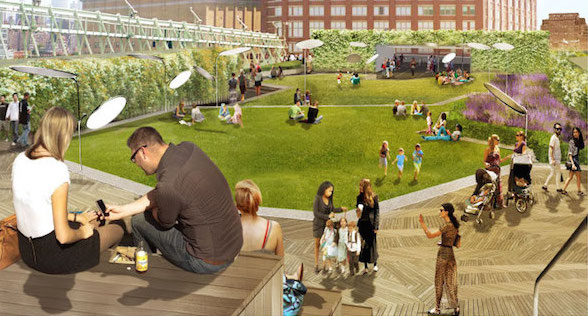
Despite these grand plans, locals were concerned whether the development would benefit the surrounding community.
Miguel Acevedo, president of the Fulton Tenants Association, asked if jobs from the construction and maintenance of the pier’s redevelopment would go to Chelsea’s low-income residents.
“I support the project, but there are a lot of unemployed people living in this community,” Acevedo said.
Greg Clancy, RXR vice president of development, responded that the project’s construction would be facilitated by the city’s unions.
“We will work with the community board and community groups, and we are open to this conversation,” Clancy said, in reference to the prospect of future jobs.
Several board members also questioned whether the retail area would accommodate local rather than international business. Pinsky conceded he was unsure what the local-to-international ratio would be.
Gwen Billig, a member of C.B. 4’s Waterfront, Parks & Environment Committee, asked if the current plan included areas for nonprofits, community and youth groups or educational facilities.
Pinsky cited a “requirement in our lease that there be a certain amount of space devoted to cultural and educational and entertainment use.” But he noted that, of the 110,000 square feet devoted to public use, “We don’t currently have space reserved for community space. What we have is a pretty tight program, and there’s a lot of public amenities already. But, again, that’s something we’re happy to have conversations about.”
Other concerns — about noise, the height and dimensions of the pier’s facade and traffic flow around the structure — were also broached. The developers and the Trust promised that none of these issues would not be a problem for locals.
Not everyone was satisfied by these promises, however.
Melvyn Stevens, the most vociferous opponent to the deal at the meeting, let loose during the public comment section, claiming that the project was “nuts.” Stevens accused the Trust of “selling out” the waterfront to developers, and pleaded for the community board vote to recommend denial of the project’s 97-year lease, so as to leave the river an “object of reverence.
“Hands off our Hudson,” Stevens concluded.
Despite the concerns expressed at the meeting, C.B. 4 Chairperson Delores Rubin later said that the Trust had always been transparent with the board about the project, and that, for the most part, board members favor the proposed renovations.
“There hasn’t been any resistance from the community board,” she said. “We’re actually very pleased that this historic pier will once again be useable, and that there is a very large amount of the project that is dedicated to open, public space.”
A Feb. 9 letter — addressed to Tust President and C.E.O. Madelyn Wils and signed by Rubin, along with members of C.B. 4’s Transportation Planning and Waterfront, Parks & Environment committees — expressed the board’s pleasure “that [the Trust] is entering into a formal lease for Pier 57 so that the revitalization of this pier may now start.” But their letter also suggested that the lease include “stipulations that the vast majority of the deliveries would be done overnight to minimize potential conflicts with the bikeway.”
C.B. 4 also urged the Trust to install solar panels and small wind turbines on the pier’s roof.
“These types of installations,” they noted, “will save on the cost of electricity use at the pier and will also serve as educational examples to others if installed in this prominent location.”
Other suggestions included the incorporation of a rainwater-capture system for use in cleaning, plant watering and the HVAC water supply.
The letter also urged the Trust and the pier’s operators to “focus on hiring local residents, both for the construction phase of this project and once Pier 57 is up and running.” An additional “ask” was that “the operators of Pier 57 give priority to artists residing or working in the Clinton/Hell’s Kitchen/Chelsea district for future art installations on this site.”
The pier plan is currently undergoing what is known as a “significant action process” public review. The public comment period is open until Tues., Feb. 16. Send an e-mail to Pier57comments@hrpt.ny.gov or mail to Amy Jedlicka, Esq., Hudson River Park Trust, Pier 40, 2nd Floor, 353 West St., New York, NY, 10014.
